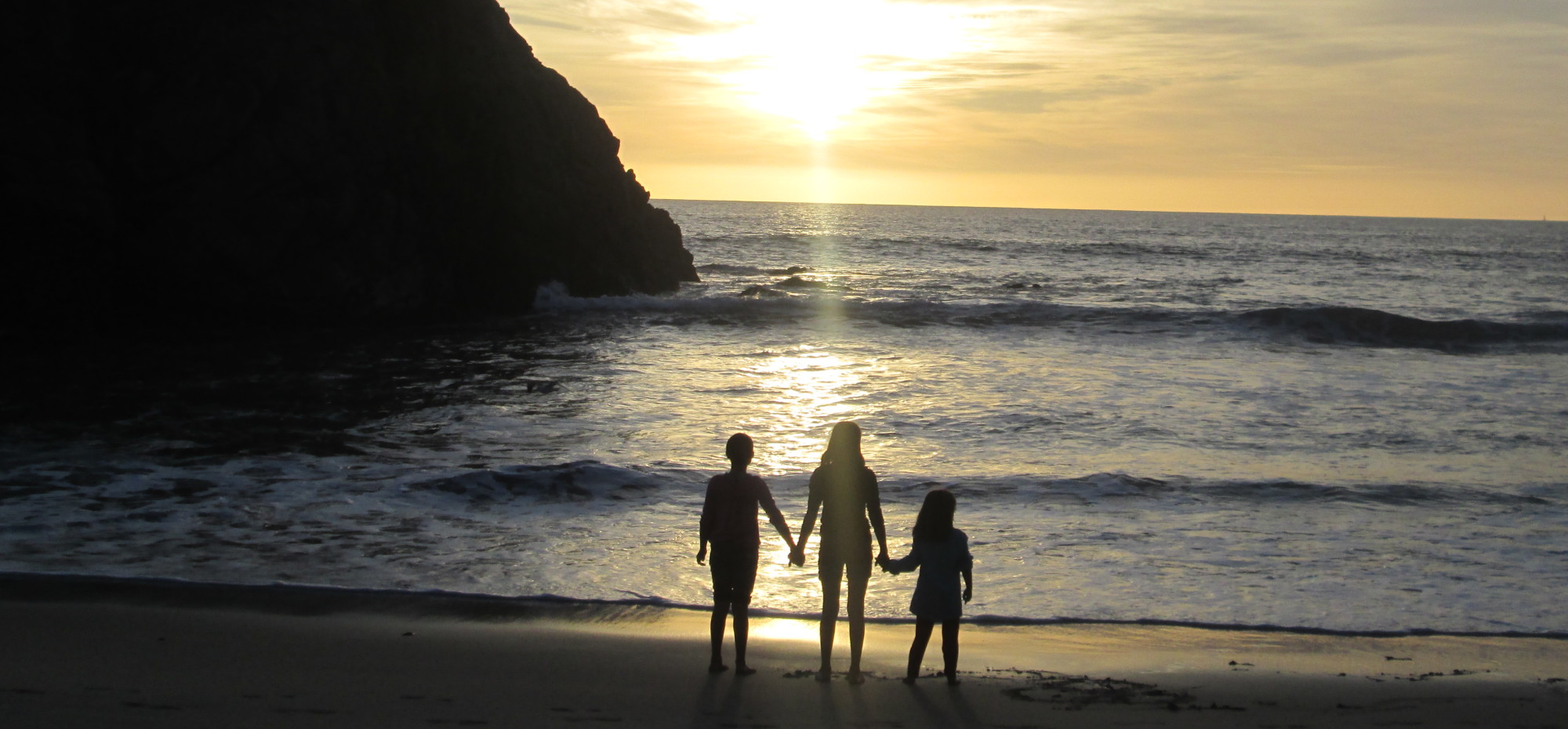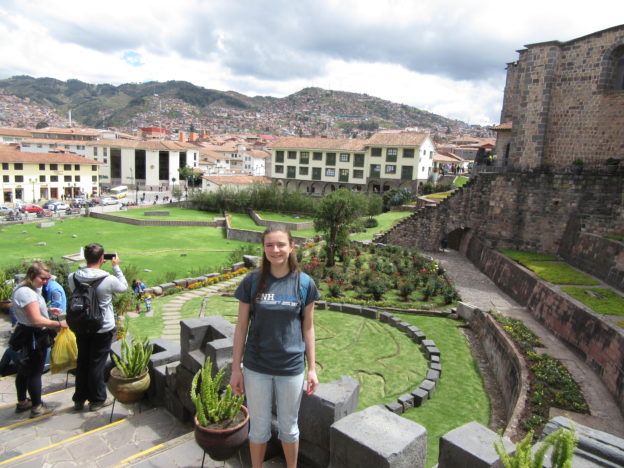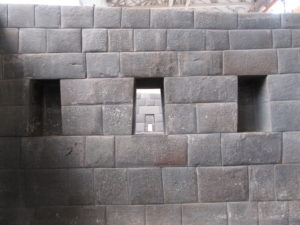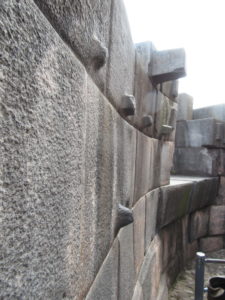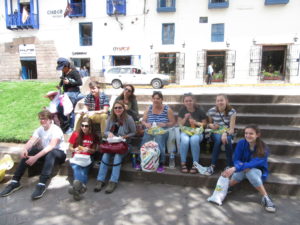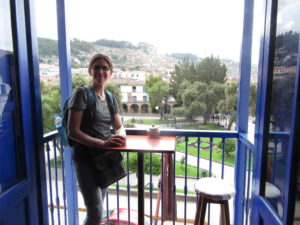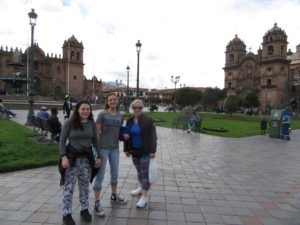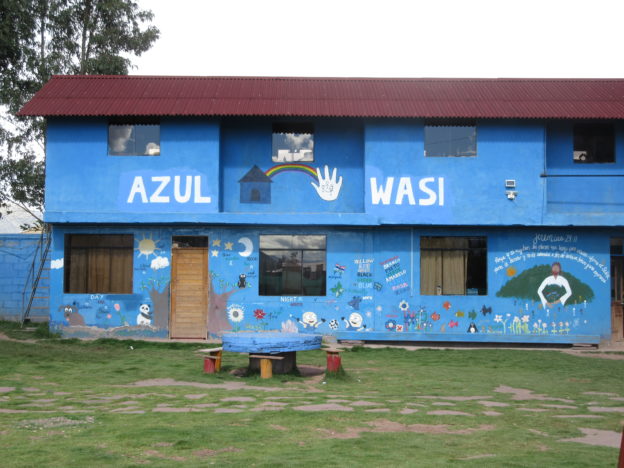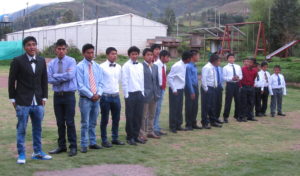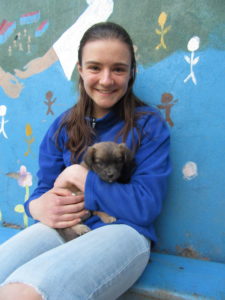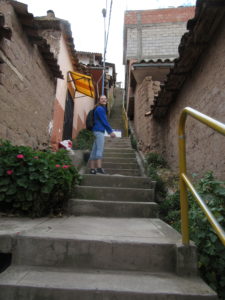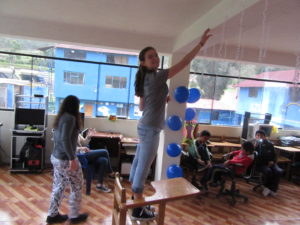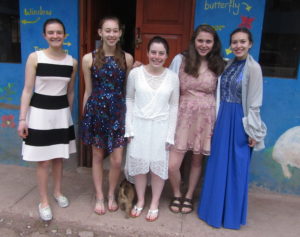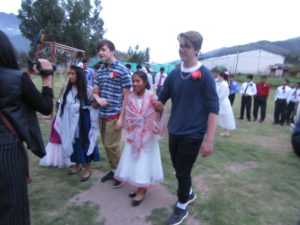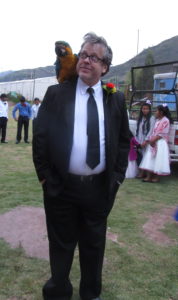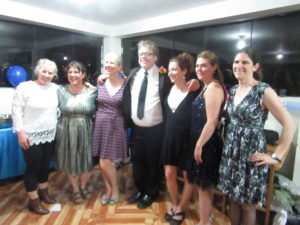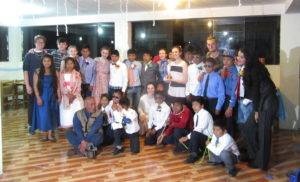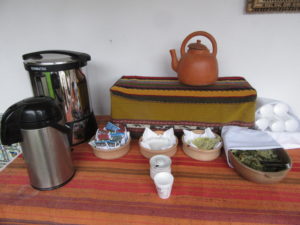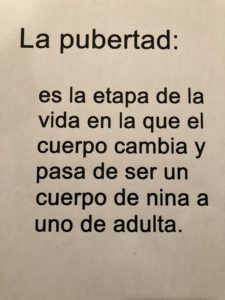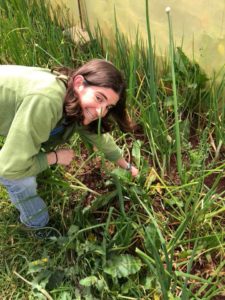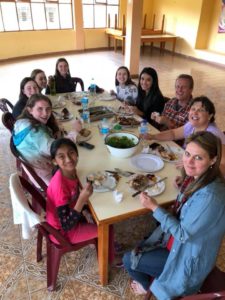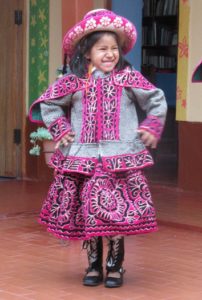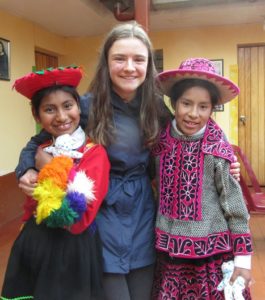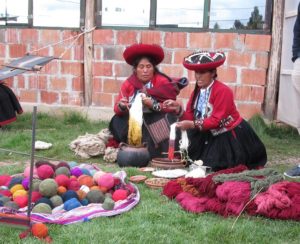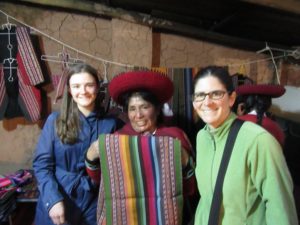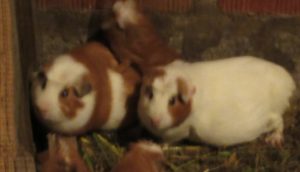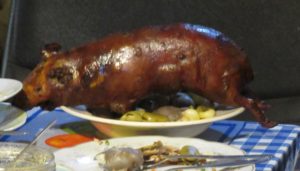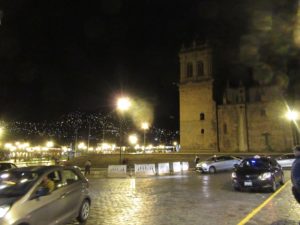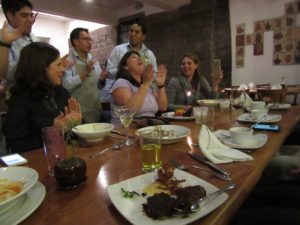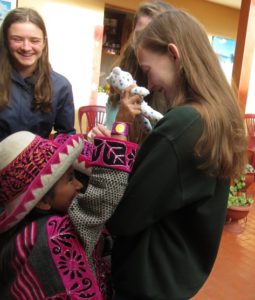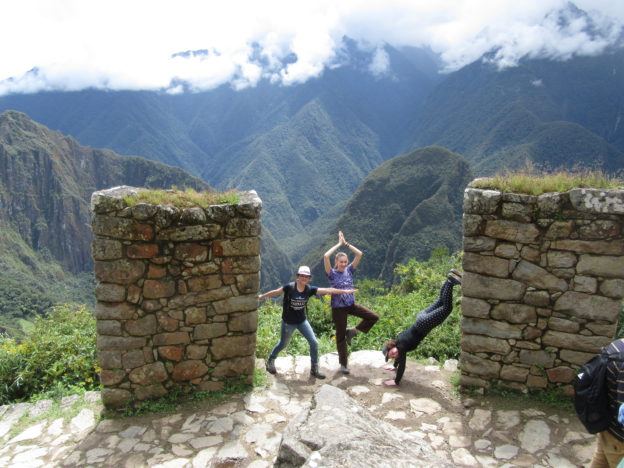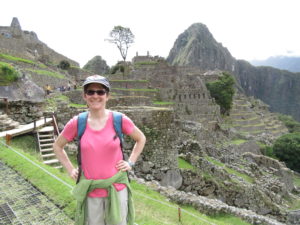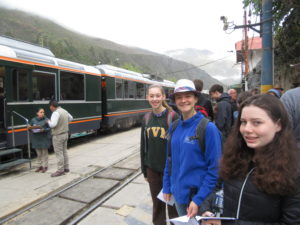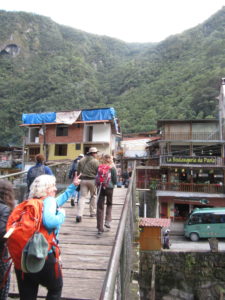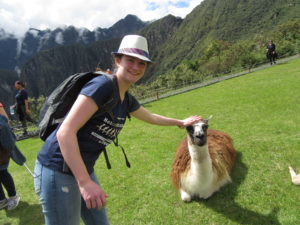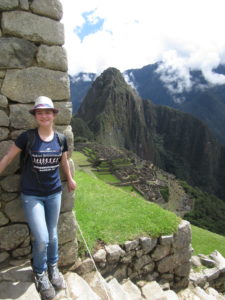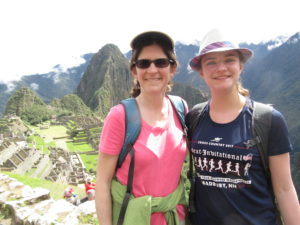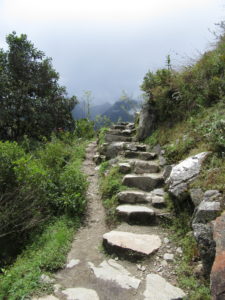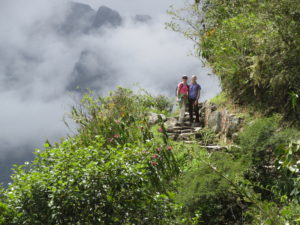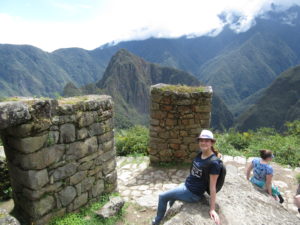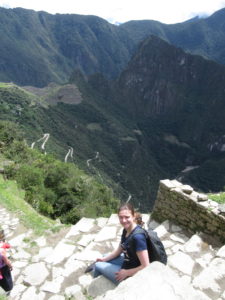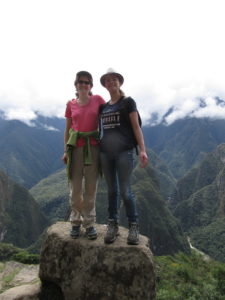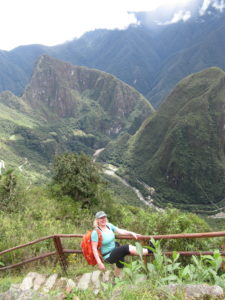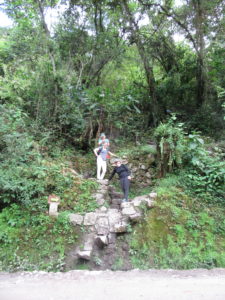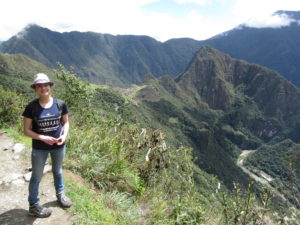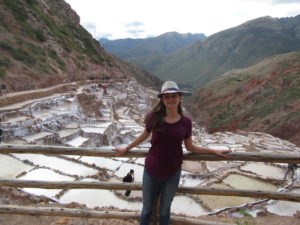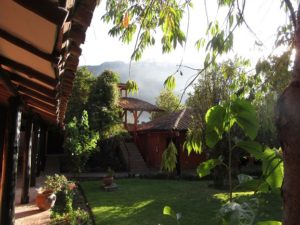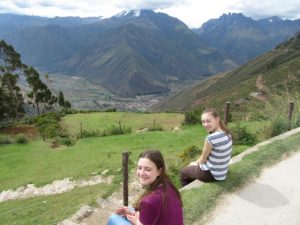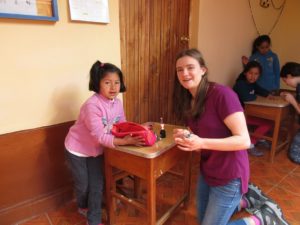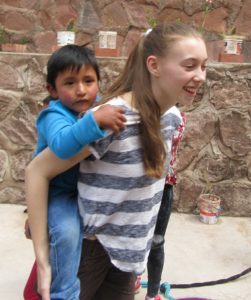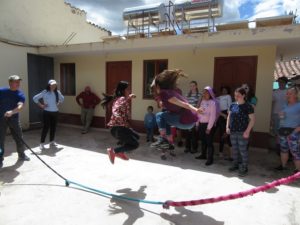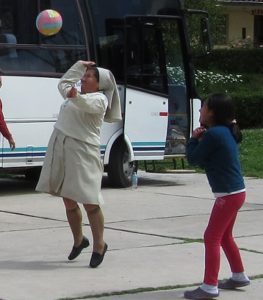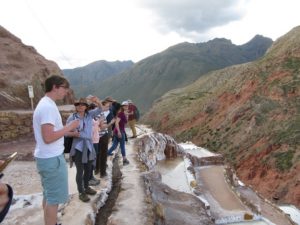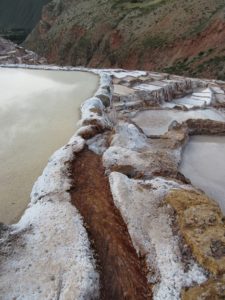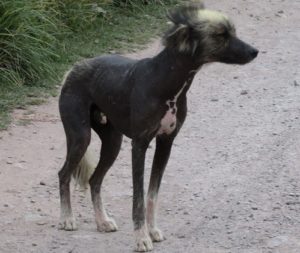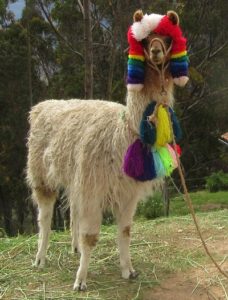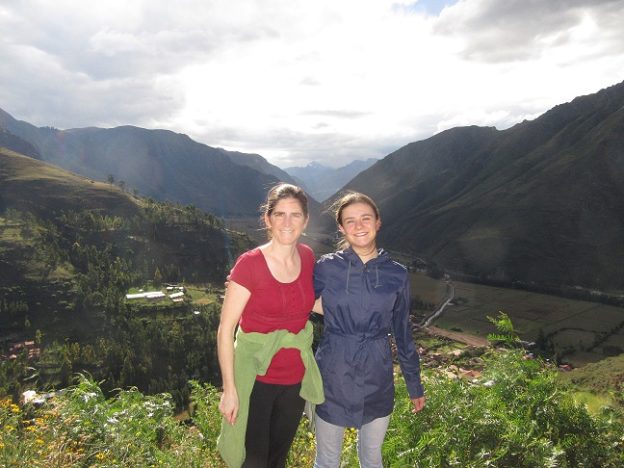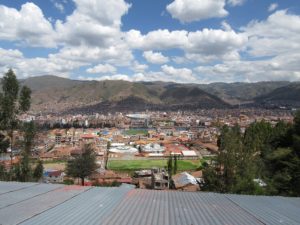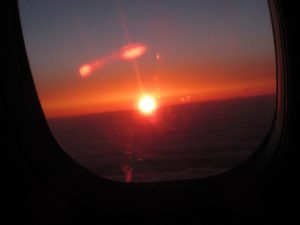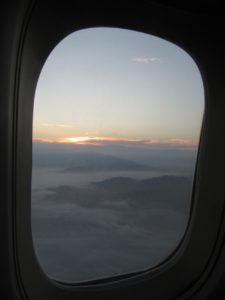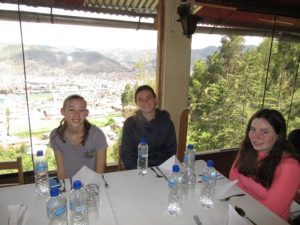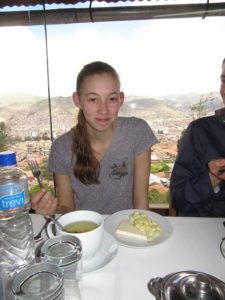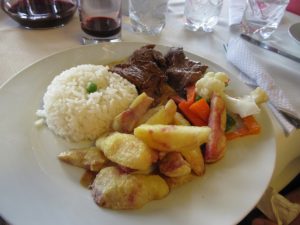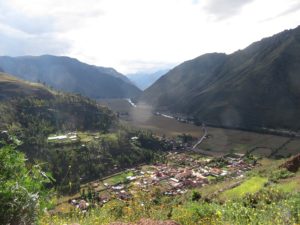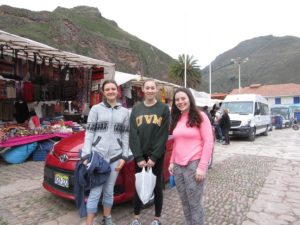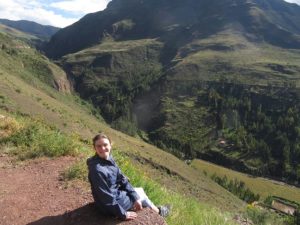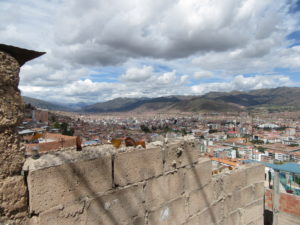 During our two days in Cusco, we’ve had the mornings free to explore this lovely city, the center (belly button) of the Inca world. Many buildings in town are built on top of the ruins of ancient Incan walls, and some of the narrow Incan roads still survive. At 11,000 feet elevation, the air is thin and we all get winded easily — which is unfortunate given that the city is built atop the Andes and there are hills everywhere.
During our two days in Cusco, we’ve had the mornings free to explore this lovely city, the center (belly button) of the Inca world. Many buildings in town are built on top of the ruins of ancient Incan walls, and some of the narrow Incan roads still survive. At 11,000 feet elevation, the air is thin and we all get winded easily — which is unfortunate given that the city is built atop the Andes and there are hills everywhere.
When we arrived our bus somehow made it down the steep, winding streets to our hotel, despite the fact that the road was barely wider than the bus. It involved a lot of gasps and near misses of buildings and pedestrians, as well as delays when inevitably a car would come along in the opposite direction, or was parked on the side of the road. (Our driver’s technique for dealing with this last scenario was to lean on the horn until the car’s owner arrived to move it; apparently this is the generally accepted practice here.) Understandably, the driver didn’t want to take this on again, so on our subsequent outings we had to climb an enormous set of stairs to be picked up on the 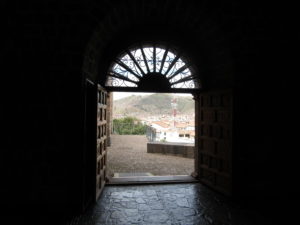 higher road. This left everyone gasping for air and on the verge of collapse.
higher road. This left everyone gasping for air and on the verge of collapse.
On the first morning, the group of us summoned several taxis and set off to Coricancha, the ancient Incan Temple of the Sun. It was considered the most sacred of all Inca sites, and the center of the Inca world. Like many such sites, it was partially destroyed by the Spanish, who then built their own cathedral on top of the ruins. (The Spanish cathedral has been destroyed and rebuilt multiple times due to earthquakes, but the ancient Inca walls still stand unscathed.) The walls of the temple were once plated with solid gold (stolen, of course, by the Spanish).
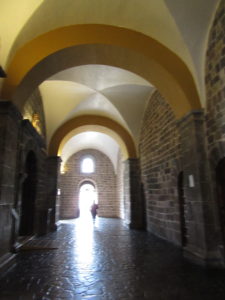
The tour was really interesting, and highlighted the construction skills and astronomical knowledge of the Inca. Much of the stonework did not use any mortar, but instead stones that inside the wall were carved like Legos to fit together with barely a visible joint. The walls were precisely oriented to the directions of the compass and the openings designed to capture the sunlight during the solstices and/or equinoxes.
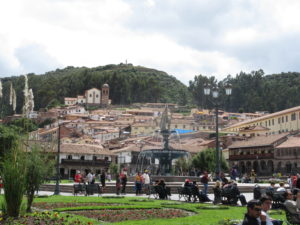 From there it was a short and scenic walk to the Plaza de Armas. This is a lovely and lively town square with three beautiful cathedrals, a plaza with a fountain, and an almost infinite number of people selling pretty much everything imaginable. Zoe and I strolled the square and surrounding area while most of our group ate lunch. (We were still full from the hotel’s huge breakfast.)
From there it was a short and scenic walk to the Plaza de Armas. This is a lovely and lively town square with three beautiful cathedrals, a plaza with a fountain, and an almost infinite number of people selling pretty much everything imaginable. Zoe and I strolled the square and surrounding area while most of our group ate lunch. (We were still full from the hotel’s huge breakfast.)
On our second morning in Cusco, Zoe, Ann, Shannon and I headed for the Choco Museo (Chocolate Museum), very reminiscent of the Choco Museo in Grenada, Nicaragua. We were hoping to do a chocolate-making workshop as we had in Nicaragua, but sadly the timing didn’t work out. We still were able to get some great free samples and souvenirs to bring home. We also toured the Catedral 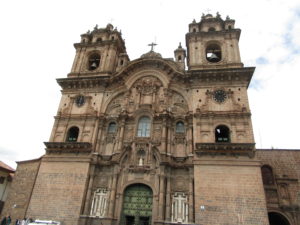 del Cuzco, a beautiful and elaborate church that unfortunately doesn’t allow photography. I think that in our limited time window we’ve barely scratched the surface of what Cusco has to offer, but that gives us a good reason to return someday.
del Cuzco, a beautiful and elaborate church that unfortunately doesn’t allow photography. I think that in our limited time window we’ve barely scratched the surface of what Cusco has to offer, but that gives us a good reason to return someday.
(When the time came to leave Cusco, the bus once again ventured down to the hotel to pick us up with our luggage. Given the road situation described above, this meant blocking the street. As we were starting to load the bus it abruptly took off to let other vehicles pass through, with poor Shannon alone on the bus. We just caught a glimpse of her startled face as the bus pulled away from us.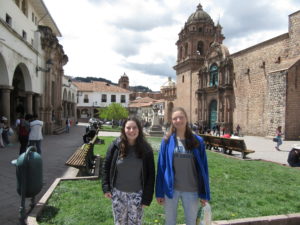 Luckily, it soon looped back around and the rest of us were able to board. Unluckily, various other vehicles including construction equipment, a dump truck, and several taxis were all trying to move about in the same area. It was like one of those puzzle games where you have to slide the individual pieces around to try to make a picture. It took a lot of time, and much maneuvering in various directions, for the bus to finally make its way out of the labyrinth.)
Luckily, it soon looped back around and the rest of us were able to board. Unluckily, various other vehicles including construction equipment, a dump truck, and several taxis were all trying to move about in the same area. It was like one of those puzzle games where you have to slide the individual pieces around to try to make a picture. It took a lot of time, and much maneuvering in various directions, for the bus to finally make its way out of the labyrinth.)
